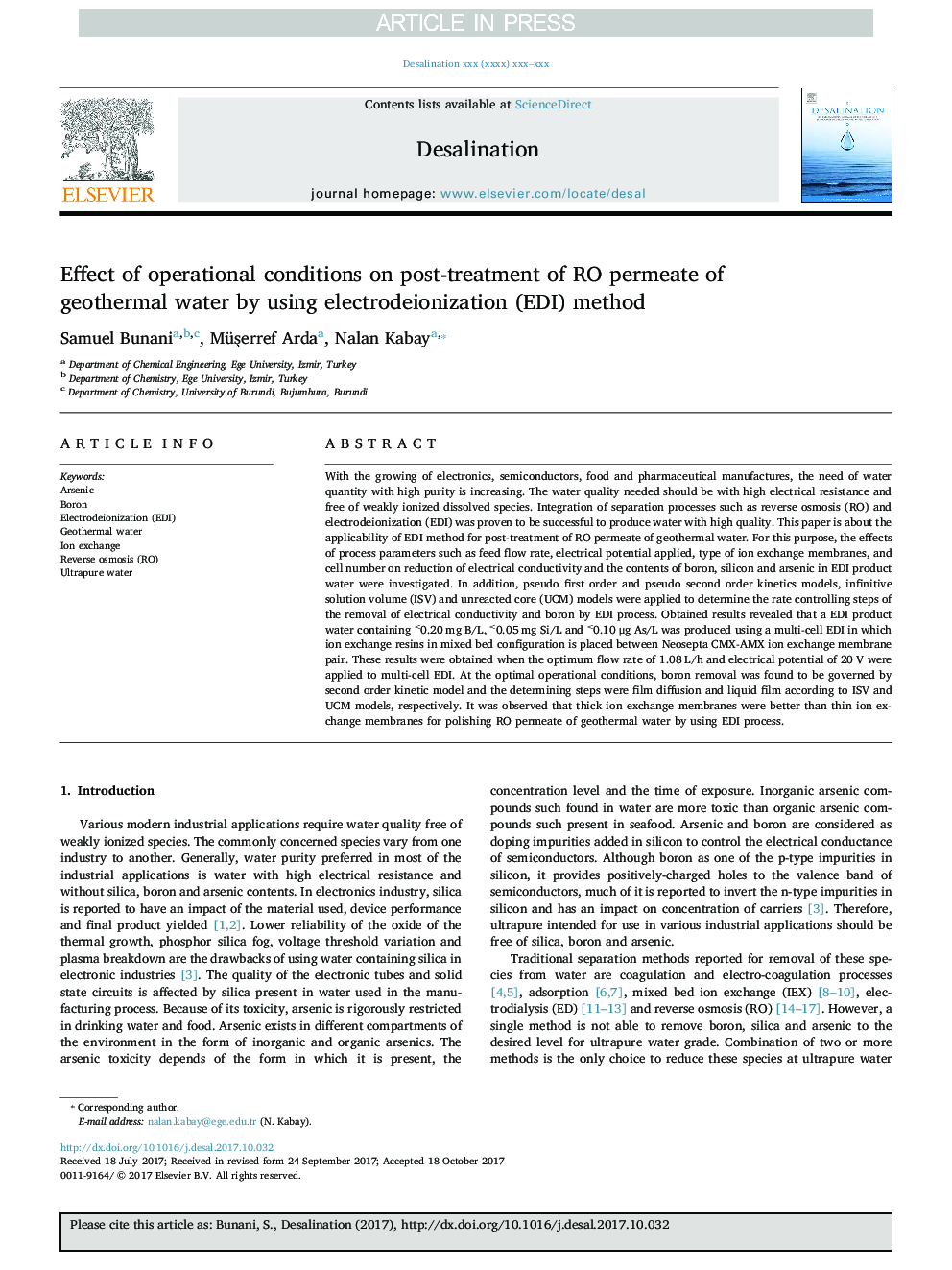| کد مقاله | کد نشریه | سال انتشار | مقاله انگلیسی | نسخه تمام متن |
|---|---|---|---|---|
| 7008032 | 1455264 | 2018 | 6 صفحه PDF | دانلود رایگان |
عنوان انگلیسی مقاله ISI
Effect of operational conditions on post-treatment of RO permeate of geothermal water by using electrodeionization (EDI) method
دانلود مقاله + سفارش ترجمه
دانلود مقاله ISI انگلیسی
رایگان برای ایرانیان
کلمات کلیدی
موضوعات مرتبط
مهندسی و علوم پایه
مهندسی شیمی
تصفیه و جداسازی
پیش نمایش صفحه اول مقاله

چکیده انگلیسی
With the growing of electronics, semiconductors, food and pharmaceutical manufactures, the need of water quantity with high purity is increasing. The water quality needed should be with high electrical resistance and free of weakly ionized dissolved species. Integration of separation processes such as reverse osmosis (RO) and electrodeionization (EDI) was proven to be successful to produce water with high quality. This paper is about the applicability of EDI method for post-treatment of RO permeate of geothermal water. For this purpose, the effects of process parameters such as feed flow rate, electrical potential applied, type of ion exchange membranes, and cell number on reduction of electrical conductivity and the contents of boron, silicon and arsenic in EDI product water were investigated. In addition, pseudo first order and pseudo second order kinetics models, infinitive solution volume (ISV) and unreacted core (UCM) models were applied to determine the rate controlling steps of the removal of electrical conductivity and boron by EDI process. Obtained results revealed that a EDI product water containing Ë0.20 mg B/L, Ë0.05 mg Si/L and Ë0.10 μg As/L was produced using a multi-cell EDI in which ion exchange resins in mixed bed configuration is placed between Neosepta CMX-AMX ion exchange membrane pair. These results were obtained when the optimum flow rate of 1.08 L/h and electrical potential of 20 V were applied to multi-cell EDI. At the optimal operational conditions, boron removal was found to be governed by second order kinetic model and the determining steps were film diffusion and liquid film according to ISV and UCM models, respectively. It was observed that thick ion exchange membranes were better than thin ion exchange membranes for polishing RO permeate of geothermal water by using EDI process.
ناشر
Database: Elsevier - ScienceDirect (ساینس دایرکت)
Journal: Desalination - Volume 431, 1 April 2018, Pages 100-105
Journal: Desalination - Volume 431, 1 April 2018, Pages 100-105
نویسندگان
Samuel Bunani, MüÅerref Arda, Nalan Kabay,